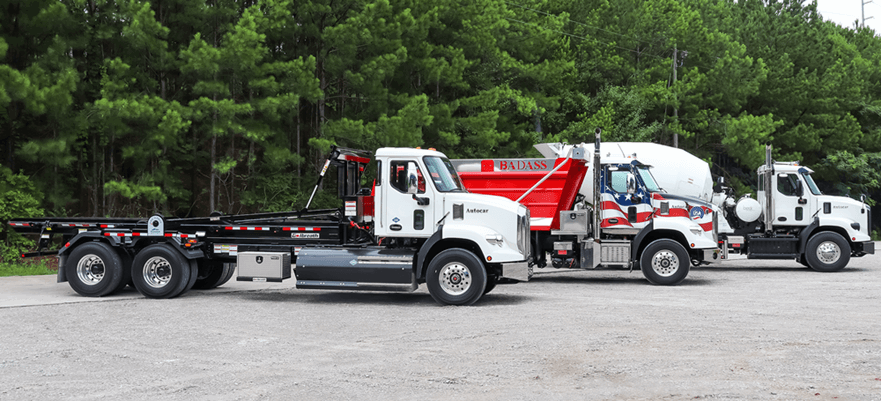- No results found
-
{{page.data.Name}}

Class 8 Truck Trends
No one expects the average driver on the road to know the intricacies of truck classifications, but heavy-duty truck drivers and fleet managers must be able to identify a class 8 truck to know the vital role they play in the industry. Better understanding the characteristics of class 8 trucks helps predict and plan for where the market is headed.
Why Classify Class 8 Trucks?
Truck classification methods help manufacturers identify and categorize trucks according to government guidelines. Knowing the class of truck your business needs is critical to avoid wasting time and capital as a fleet manager.
Classifying trucks starts with identifying the gross vehicle weight rating (GVWR), which indicates the maximum truck weight and factors in what sized load it carries. Truck classification is helpful in commercial designation, vehicle registration and consideration of the truck’s life expectancy and required permits.
Severe-Duty Class 8 Trucks
Heavy-duty truck classification is primarily the domain of commercial class 7 and 8 trucks. However, when it comes to construction and demolition, refuse and recycling or other intense vocations, class 8 vehicles are the most prevalent.
Class 8 trucks are more than heavy-duty, coming in at more than a 33,000 GVWR and requiring drivers to possess a commercial driver’s license (CDL). You’ll see these trucks on and off the roads delivering materials and machinery to all kinds of job sites.
U.S. sales of class 8 trucks have increased year-over-year since 2009, surpassing 190,000 about a year ago. In 2019, there were nearly 4 million class 8 trucks in operation around the nation.
As the carrier of North America’s leading and first severe-duty vocational truck brand, Autocar customizes every truck according to your unique needs and application. Current Autocar class 8 trucks include the ACMD 4x2 and 6x4 cabovers, ACX cabover, ACTT terminal tractor, E-ACTT electrical terminal tractor and DC-64 trucks for refuse, mixers, pump or dump.
Trends in the Class 8 Truck Market
Safety considerations are an important part of Autocar’s development of class 8 vehicles. In June, Autocar became the first to add severe-duty cabovers equipped with ADAS technology to the roads. Autocar trucks with ADAS technology, or the Advanced Driver-Assistance System, include an electronic stability control system, rollover stability control system, forward collision warning, advanced emergency braking system, stationary merge assistance and blind-spot detection.
Since Autocar’s significant contribution to the industry’s future, the National Highway Transportation Safety Board has pushed for all truck manufacturers to include ADAS technology moving forward.
The demand for electric trucks is another significant trend in the class 8 truck market. Autocar leads the industry in green innovation. Since the introduction of the Autocar E-ACTT, the zero-emissions, electric terminal tractor, Autocar remains dedicated to setting the standards for alternative-fueled vehicles.
The market continues to improve since the COVID-19 pandemic began last year, which created unforeseen challenges in the production of class 8 trucks. Additionally, the Biden administration’s infrastructure bill is likely to encourage the demand for class 8 trucks. As a result, severe-duty truck manufacturers predict the North American class 8 market to reach 220,000 vehicles this year, with another increase expected in 2022. Due to these growing demands, you’ll want to submit your Autocar orders soon.
Sources: